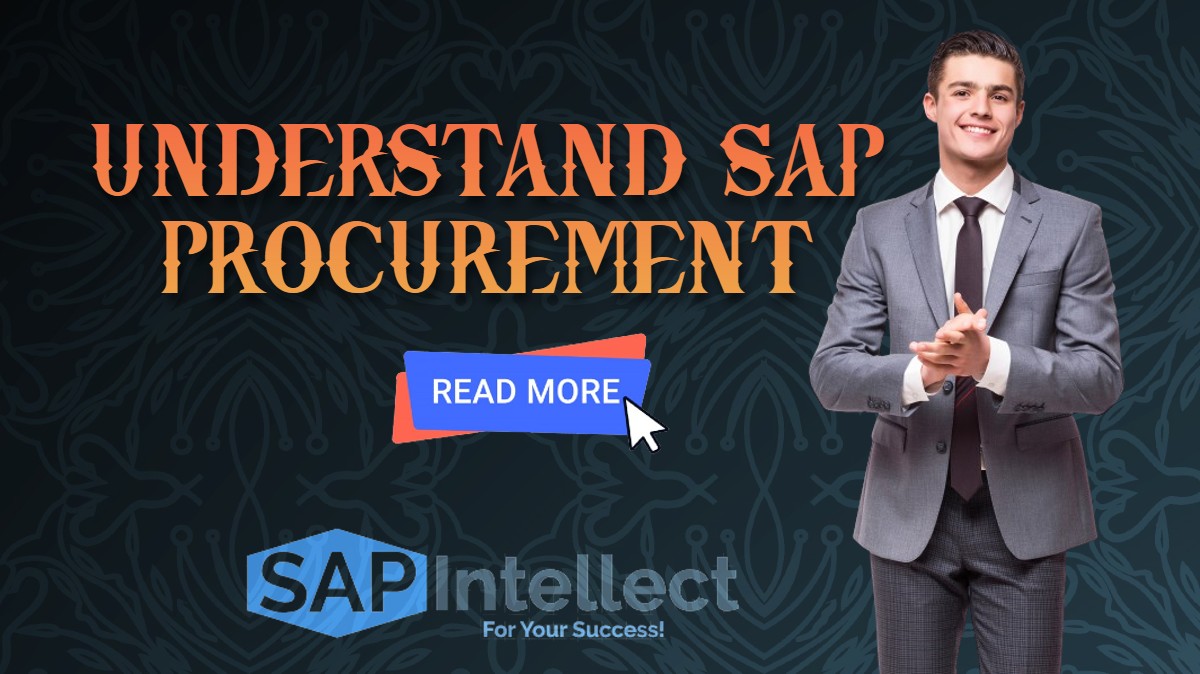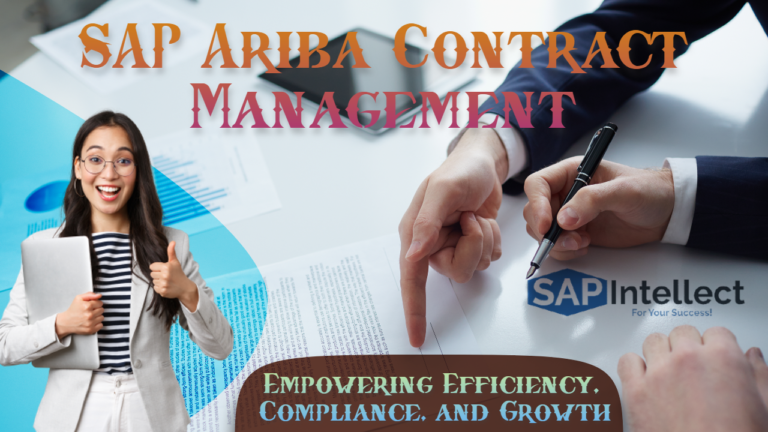Mastering Procurement Brilliance: Unleashing the Powerhouse of SAP for Supply Chain Dominance!
SAP Procurement, an integral module within the SAP ERP (Enterprise Resource Planning) system, plays a pivotal role in optimizing and managing the procurement processes of organizations across various industries. In this comprehensive guide, we will delve into the intricacies of SAP Procurement, exploring its key features, benefits, implementation best practices, and its impact on streamlining supply chains for business excellence.
Understanding SAP Procurement
1.1 Definition and Scope:
SAP Procurement refers to the suite of tools and functionalities within the SAP ERP system designed to streamline and automate the procurement process. It covers a wide range of activities, from requisitioning and purchase order creation to vendor management and invoice processing.
1.2 Key Components:
SAP Materials Management (MM): The core module that handles the procurement process, inventory management, and material valuation.
SAP Supplier Relationship Management (SRM): Focuses on managing supplier relationships, strategic sourcing, and collaboration with vendors.
SAP Ariba: An integrated cloud-based procurement solution that enhances collaboration between buyers and suppliers, providing a seamless procurement experience.
Key Features of SAP Procurement
2.1 Procurement Planning:
SAP Procurement enables organizations to plan their procurement activities efficiently. Users can create requisitions based on their material requirements, taking into account inventory levels, historical consumption, and future demand projections.
2.2 Purchase Order Management:
The module facilitates the creation and management of purchase orders, allowing users to define terms, conditions, and delivery schedules. Automation features reduce manual errors and streamline the entire order creation process.
2.3 Vendor Management:
SAP Procurement provides robust tools for vendor management, allowing organizations to evaluate and select suppliers based on various criteria such as performance, pricing, and reliability. Supplier collaboration features foster better communication and long-term partnerships.
2.4 Invoice Processing:
Automated invoice processing helps organizations reconcile purchase orders and receipts with vendor invoices, reducing the risk of discrepancies and ensuring accurate and timely payments.
2.5 Integration with Other SAP Modules:
SAP Procurement seamlessly integrates with other SAP modules, such as Finance (FI) and Controlling (CO), providing a holistic view of the entire procure-to-pay process.
Benefits of SAP Procurement
3.1 Cost Savings:
By automating procurement processes and optimizing supplier relationships, SAP Procurement helps organizations negotiate better deals, reduce manual errors, and ultimately achieve cost savings.
3.2 Efficiency and Time Savings:
Automation and streamlined workflows enable quicker decision-making, reducing cycle times from requisition to payment. This efficiency contributes to enhanced productivity and responsiveness in the procurement process.
3.3 Data Accuracy and Visibility:
SAP Procurement provides real-time visibility into procurement activities, ensuring accurate and up-to-date information. This transparency aids in better decision-making and risk management.
3.4 Compliance and Risk Mitigation:
The module helps organizations adhere to regulatory requirements and internal policies. By centralizing procurement data and processes, SAP Procurement assists in identifying and mitigating risks associated with non-compliance or vendor-related issues.
Implementation Best Practices
4.1 Needs Assessment:
Before implementing SAP Procurement, organizations should conduct a thorough needs assessment to understand their specific procurement requirements, existing processes, and desired outcomes.
4.2 Stakeholder Engagement:
Involving key stakeholders from various departments is crucial for successful implementation. Their insights and feedback can help customize the system to meet the diverse needs of the organization.
4.3 Data Migration:
A robust data migration strategy is essential to ensure a smooth transition to SAP Procurement. Clean and accurate data sets the foundation for effective procurement processes.
4.4 Training and Change Management:
Comprehensive training programs should be developed to familiarize users with the new system. Change management strategies should address resistance and ensure a positive transition.
Case Studies: Real-world Examples of SAP Procurement Success
5.1 Company A: Streamlining Global Procurement
Explore how a multinational corporation successfully implemented SAP Procurement to streamline their global procurement processes, enhance collaboration with suppliers, and achieve significant cost savings.
5.2 Company B: Improving Efficiency in Public Sector Procurement
Examine how a government agency leveraged SAP Procurement to improve efficiency in public sector procurement, ensuring transparency, compliance, and better allocation of public funds.
Future Trends in SAP Procurement
6.1 Artificial Intelligence and Machine Learning:
The integration of AI and ML in SAP Procurement is expected to enhance predictive analytics, demand forecasting, and decision-making, further optimizing the procurement process.
6.2 Blockchain Technology:
Blockchain is poised to bring greater transparency and security to procurement processes by creating a decentralized and tamper-resistant ledger for transactions and contract management.
6.3 Sustainability and ESG (Environmental, Social, and Governance):
As organizations increasingly prioritize sustainability, SAP Procurement is likely to evolve to support ESG initiatives, enabling better tracking and reporting of environmentally and socially responsible procurement practices.
Conclusion:
SAP Procurement stands as a cornerstone in the digital transformation journey of organizations, offering a comprehensive solution to optimize procurement processes, reduce costs, and enhance collaboration with suppliers. By staying abreast of the latest trends and leveraging the full potential of SAP Procurement, businesses can achieve operational excellence, streamline their supply chains, and stay competitive in an ever-evolving business landscape.





